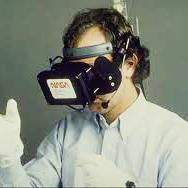The safe transition from conditional automation to manual driving control is significantly intertwined with the vehicle's lateral and longitudinal dynamics. The transition may occur as a result of a system-initiated mandatory takeover (MTOR) or as a driver-initiated discretionary takeover (DTOR). In either condition, the takeover process entails differing cognitive demands and may affect the driving behaviour differently. This study analyzes driving stability and perceived mental workload in 304 takeover attempts recorded from 104 participants within virtual and immersive reality environments. Adopting an exploratory approach, this dynamic simulator study employs a mixed factorial design. Utilizing a deep neural network-based survival analysis with SHAP interpretability, the study investigated the influence of covariates on perception-reaction time (PRT), distinguishing between safe and unsafe control transition and offering insights into the temporal dynamics of these shifts. The distributions of key parameters in experimental groups were analyzed and factors influencing the perceived mental workload were estimated using multivariate linear regression. The findings indicate a notable decrease in the risk of unsafe takeovers (described by a longer PRT) when drivers have prior control-transition experience and familiarity with Automated Vehicles (AVs). However, driver's prior familiarity and experience with AVs only decreased the perceived mental workload associated with DTOR, with an insignificant impact on the cognitive demand of MTOR. Furthermore, multitasking during automated driving significantly elevated the cognitive demand linked to DTOR and led to longer PRT in MTOR situations.
翻译:暂无翻译




